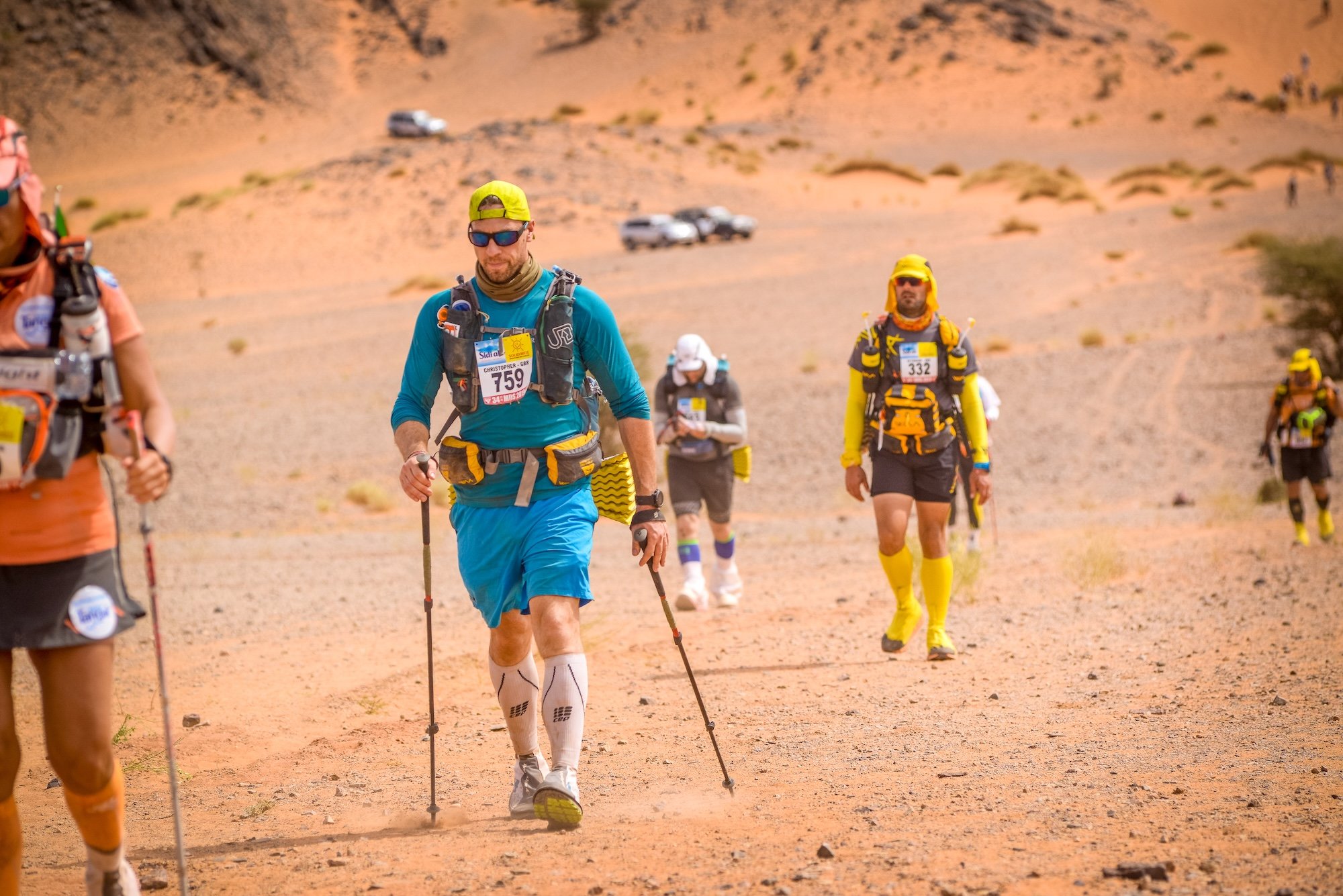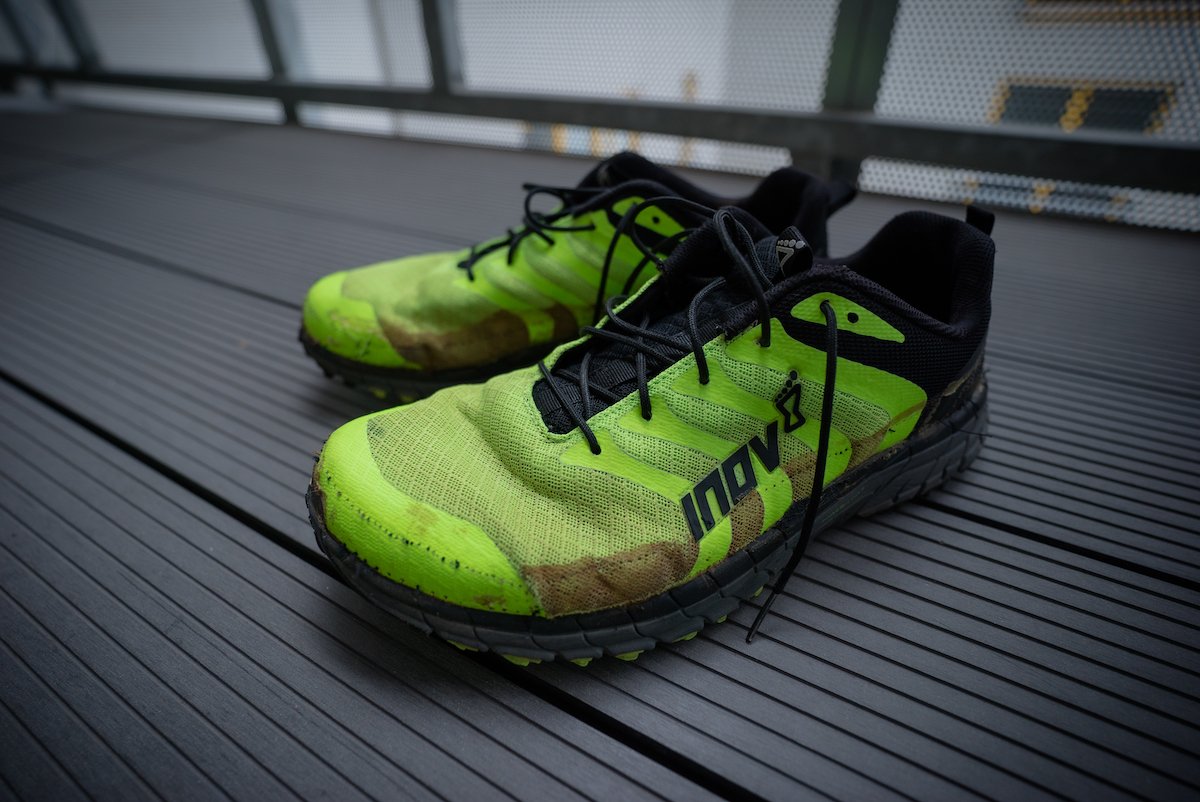Time left until the next Marathon des Sables
The complete Marathon des Sables packing list:
The 35 items you need to take to be successful on this epic race!
Ethics statement: Within the article, there are affiliate links. If you buy something after clicking the link, I will receive a small commission. To know more about our terms of service, you can visit the link at the bottom of the page. Thank you!
It is said that gear selection will make or break your race, find out what we used here to make sure you’re best prepared for this epic challenge!
Most people opt with the official WAA backpack, which does them fine – however I found it to be too small for my needs as everything weighs more.
My first choice was to buy the Raidlight Desert pack ultra-combo, however, when it arrived – I presumed it had been made by a 5-year-old. The stitching was poor quality and it didn’t fit me in any way. On the plus side, it was light and did look quite cool in white – however I decided to send it back and get a refund. I’m quite glad I did as my tent-mate tore his Raidlight bag on the MDS. Hopefully just a short-term quality issue however I’d be reluctant to buy their bags again on that one experience.
I went with the Ultimate Direction Fastpack 35L in a medium / large (I’m 6’2” and this fitted me perfectly) which was the best choice as I’m taller and heavier than most runners.
If the price puts you off, it might be worth looking at the Montane trailblazer backpack as it has lots of similar high-end fastpacking features but at a much lower cost.
The packs fit me well from the start of training, and the extra capacity over the WAA one was super useful not only for training through winter but also having space to store extra water between the longer checkpoints.
I partnered it with the WAA 5L front pouch (which got retired to my main backpack compartment after the first day) and side pouches. One side pouch held my snacks for the day (making it easy to reach on the move) and other was a small admin pouch comprising of: salts tablets; suntan lotion; venom extractor; a small roll of zinc oxide tape and my GoPro. I found this set up invaluable as the front pockets don’t hold a huge amount on the backpack.
Read my extended review of it for more images and detail.
Clothing
2. Micro down jacket: I took a rather excellent Montane micro down jacket which was ridiculously light and packs down to the size of an apple.
3. Shorts: I used Under Armour heat gear running shorts as they’re 4-way stretchy (super useful to prevent snagging) and allow heat to dissipate quickly.
4. Underwear: I used Under Armour boxer jocks which didn’t give me any chaffing at all.
5. T-shirt: I used Rab’s excellent Force Long Sleeve t-shirt as it has a factor 50 sun protection (SPF), an anti-bacterial treatment and low-profile / soft seams. Long sleeves mean you can pull them down to protect you from the sun without overheating.
Mandatory items
For the 2019 race, the following items were mandatory (this may obviously change for the future).
6. head torch and a complete set of spare batteries: My Petzl Tikka headtorch was perfect for this – which you only use for the night stage. My top-tip is to use some fabric tape (or whatever you can get hold of) and attach the 2 spare AAA batteries to the back of it, so you always know where they are. As an added bonus, they also act as a counter weight to the lamp.
7. Sleeping bag. See my write up of the sleeping system below.
8. 10 safety pins. I bought thin and cheap and spent the race regretting it as they broke every few hours. I almost got a penalty on the second day when I had one pin holding my front race number on. Top tip: Don’t buy cheap!
9. compass, with 1° or 2° precision. I didn’t use my compass during the race as I was never first at any point (!!). Even at night the course is lit up with glow sticks. I just bought a super cheap one and it stayed in my backpack the entire time.
10. Lighter: I took one because it was a named item however relied on Lifeproof’s windproof matches more as the lighter was ineffective in anything more than a gentle breeze (and you’re not supposed to cook under the tents – the staff do come around and remind you of this!).
Continue reading in our digital MdS guidebook!
This digital download is over 8000 words of hard-won knowledge, advice, guidance, ideas across 17 pages, covering the following subjects:
- How to choose the right shoes for the Marathon des Sables
- Sleeping bags options
- Food selection
- Essential clothing for the Marathon des Sables
- Nutritional demands / calorie planning for the race
- Different backpack options
- The application process.
- How to meet the cut-off times
- The race format.
- Understanding the mandatory gear list.
- Tent etiquette.
- Weight reduction ideas for your kit.
- Taking care of yourself and blister management.
- Race strategy for completion.
- The pre-race medical checks
- Where to get your footwear tailored for gaiters.
- Planning for charity fundraising.
- Ideas to aid physical preparation.
- How to condition yourself for the demands of the desert
- How to enter from overseas
- How to generate social media interest for funding it.









